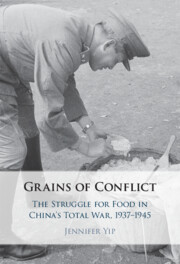Refine search
Actions for selected content:
242 results
Chapter 3 - Place, Transcendence, and Equivocal Nostalgia in Lynette Roberts’ Gods with Stainless Ears and T. S. Eliot’s Four Quartets
-
- Book:
- Nostalgia and National Identity in the British and Irish Modernist Epic
- Published online:
- 27 November 2025
- Print publication:
- 18 December 2025, pp 81-111
-
- Chapter
- Export citation
29 - Francis Webb
-
-
- Book:
- The Cambridge History of Australian Poetry
- Published online:
- 19 November 2025
- Print publication:
- 11 December 2025, pp 538-557
-
- Chapter
- Export citation
Chapter 16 - The People’s War
- from Part IV - In the Name of the People
-
-
- Book:
- 'The People' and British Literature
- Published online:
- 11 December 2025
- Print publication:
- 11 December 2025, pp 257-272
-
- Chapter
- Export citation
9 - Australian Poetries of War and Conflict
-
-
- Book:
- The Cambridge History of Australian Poetry
- Published online:
- 19 November 2025
- Print publication:
- 11 December 2025, pp 169-187
-
- Chapter
- Export citation
Epilogue
-
- Book:
- Everyday Occupation
- Published online:
- 27 November 2025
- Print publication:
- 11 December 2025, pp 196-212
-
- Chapter
-
- You have access
- Open access
- HTML
- Export citation
Saving Katoku: A Case Study of the Conflicting Environmental and Economic Demands on Japan’s Island Communities – CORRIGENDUM
-
- Journal:
- Asia-Pacific Journal / Volume 23 / 2025
- Published online by Cambridge University Press:
- 28 November 2025, e23
-
- Article
-
- You have access
- Open access
- HTML
- Export citation

The Fascist Zenith
- War and Dictatorship under Axis Rule
-
- Published online:
- 26 November 2025
- Print publication:
- 11 December 2025
-
- Element
- Export citation
9 - Japan and New Orders in East Asia, 1914–1945
- from Part III - To the Pacific War
-
-
- Book:
- East Asia and the Modern International Order
- Published online:
- 25 November 2025
- Print publication:
- 20 November 2025, pp 166-184
-
- Chapter
- Export citation
20 - The Politics of War Memory in the USSR and Post-Soviet Russia
- from Part VII - Post-war Legacies and Myth-Making
-
-
- Book:
- The Cambridge Companion to the Nazi-Soviet War
- Published online:
- 13 November 2025
- Print publication:
- 20 November 2025, pp 365-381
-
- Chapter
- Export citation
19 - Germany’s Selective Memory of the Eastern Front
- from Part VII - Post-war Legacies and Myth-Making
-
-
- Book:
- The Cambridge Companion to the Nazi-Soviet War
- Published online:
- 13 November 2025
- Print publication:
- 20 November 2025, pp 349-364
-
- Chapter
- Export citation
10 - The Division of Korea
- from Part IV - The High Cold War in Asia
-
-
- Book:
- East Asia and the Modern International Order
- Published online:
- 25 November 2025
- Print publication:
- 20 November 2025, pp 187-206
-
- Chapter
- Export citation
1 - War Aims: Ralph Bunche, H. G. Wells, and “World Social Democracy”
- from Part I - Internationalizing Human Rights
-
- Book:
- In Defense of Economic and Social Human Rights
- Published online:
- 06 November 2025
- Print publication:
- 20 November 2025, pp 33-66
-
- Chapter
- Export citation

Grains of Conflict
- The Struggle for Food in China's Total War, 1937–1945
-
- Published online:
- 23 August 2025
- Print publication:
- 31 July 2025
Chapter 5 - Reading between the Lines
-
-
- Book:
- Antifascism(s) in Latin America and the Caribbean
- Published online:
- 21 July 2025
- Print publication:
- 07 August 2025, pp 107-125
-
- Chapter
- Export citation
Chapter 6 - Applying the Atlantic Charter to the Caribbean Basin
-
-
- Book:
- Antifascism(s) in Latin America and the Caribbean
- Published online:
- 21 July 2025
- Print publication:
- 07 August 2025, pp 126-142
-
- Chapter
- Export citation
Introduction
-
- Book:
- Grains of Conflict
- Published online:
- 23 August 2025
- Print publication:
- 31 July 2025, pp 1-21
-
- Chapter
- Export citation
Saving Katoku: A Case Study of the Conflicting Environmental and Economic Demands on Japan’s Island Communities
-
- Journal:
- Asia-Pacific Journal / Volume 23 / 2025
- Published online by Cambridge University Press:
- 25 July 2025, e11
-
- Article
-
- You have access
- Open access
- HTML
- Export citation
Introduction: An Experiment in Race Relations
-
- Book:
- A Black Army
- Published online:
- 16 June 2025
- Print publication:
- 17 July 2025, pp 1-14
-
- Chapter
- Export citation

Warriors in Washington
- Henry Stimson, the US Army, and the Politics of American Power in World War II
-
- Published online:
- 23 June 2025
- Print publication:
- 10 July 2025
13 - Carolyn Parker’s Electronic Frequencies
-
-
- Book:
- Women in the History of Quantum Physics
- Published online:
- 02 July 2025
- Print publication:
- 19 June 2025, pp 361-383
-
- Chapter
- Export citation
